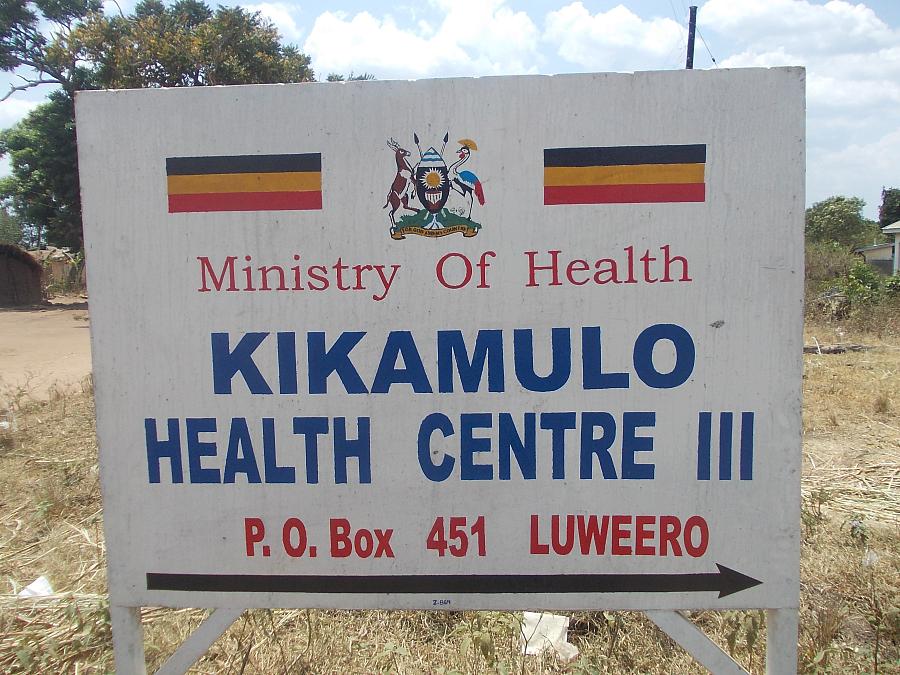Two years of ViiV - PMTCT project implementation bear fruit

Health centres where NSAs work
The PMTCT project currently implemented by Persons Living with HIV groups (PHAs) has now been running for two years in the districts of Luwero, Nakaseke, Mukono and Iganga. The project which started in 2012 has benefitted from a pool of trained network support agents (NSAs) who had been trained by the International HIV/AIDS Alliance in what was known as the network project.
Goal: NSAs and Mother to Child Transmission of HIV
The Network support agents (NSAs), identify women who are pregnant and refer them to health facilities and later make follow up on them in a bid to have them tested and enrolled for PMTCT in case they are found to have the HIV virus. According to Okumu Vincent a Health worker in Kikamulo Health Centre III, “The NSAs have managed to convince a number of women to go to the health facilities through mobilization and community engagement activities.'
Design and structure
The design strengthens the ability of PHA groups to effectively respond to the PMTCT needs of the communities. One key element of this project design is that the ViiV funds are used to reach a greater number of PHA groups with training and capacity building activities. The design structure also encourages the groups to uphold better accountability practices and management skills, through improved reporting skills and innovative practices among PHAs.
Systems and mechanisms for documenting work
The PHA groups are now very comfortable with some practices of documenting their work. For instance they share reports with district partners especially those at the Ministry of Health and hold regular meetings with officials at the district and forums of PHA. They also share information with the Community Health Alliance in Uganda. Some of the aspects of the PHAs activities are documented by a correspondent assigned this task and their work is published on the Key correspondents’ website, Reporting on health and other international health news outlets.
Community emphasis
The major emphasis of the intervention is the focus on the community. Groups of Persons Living with HIV are within the communities and some PHAs have adopted the work plans of the groups into their personal schedules. According to Sudat from Bombo in Luwero,
“Because I know what is in the work plan and what am supposed to do, I utilize every opportunity for a community gathering to teach people about what they should know. At such opportunities, I tell people about condoms, safer sex practices and I encourage pregnant women to go and test. Luckily, some of them find me at the health facility where I am stationed as a network support agent”
Placement of NSAs at Health centres
Placement of NSA at the health facilities is one of the most successful components of the PMTCT networks project. With the NSAs uptake of the PMTCT services significantly increased.
Okumu vincent says,
“We could not manage without the NSAs. And we are finding it difficult to operate without NSAs. In future when the PMTCT project ends, there should be a way of creating incentives for very committed NSAs so that they do not create a big gap when they leave”.
According to an Evaluation of the Network project carried out in 2009,Mi Kim, et al, it was found that NSAs compensate for a shortage of staff at health centres and help process patients more quickly by informing patients where to go for specific services within the health centre, receiving patients who report to the ART clinic and directing them to the appropriate consultation room. It noted that because NSAs live openly and positively with HIV, they have helped reduce the stigma that previously deterred Persons living with HIV from seeking care.
PMTCT project performance
There are several success stories of the PMTCT network project. In Semuto – Luwero, a network group known as Asiika Obulamu has succeeded in reaching out to as many as ten villages including Kikandwa, Kikondo, Kijaguzo, Mijinga,Nakasandagira, Kabere, Kitoto, Namirembe, Kawonya and Kapeeka. This is yet another of an ambitious community based approach that operates in a resource limited setting to increase rates of PMTCT enrolment and retention in care and consequently successful treatment outcome.
According to Theopista Basemera a group member of Asiika Obulamu and Namusaale Group of Persons living with HIV/AIDS,
“As PHAs in we have been able to establish ourselves as outreach change agents and our position in our community is well known. We interact at a higher social level with people that matter, like doctors, community development officers, district leadership and even the sub county administration. We are happy that some us them can receive us without prior appointment to go and discuss. This is a great step that would not have been realised easily without support from the Community Health Alliance –Uganda”.
The PHA PMTCT networks project has already had a strong impact in Luwero district, according to Zziwa Abdalla the PHA group leader.
“There are more women who have been encouraged to test by our network of Network Support Agents (NSAs). This has increased the number of women tested for HIV and found to be positive to respond to the PMTCT project requirements. Many people are also benefiting from our community outreach interventions where anybody in the community is welcome. We target women, young people and even men, who are an important component
Mutyaba –parish chief – Kamuli, Nakaseke, says that the involvement of PHAs has made the work of community leaders and village health teams easier because they work in partnership with them to bring services closer to the people.
Misango John who is the Chairman Bagundese group of PHA and also works as a Peer Father for a Family support Group, Kiwoko hospital says they have been able to work with a total of 2500 HIV positive persons in Kiwoko hospital

